The latest Mini is bigger – and slightly smaller engined.
Usually, that’s a recipe for slower – and drinks more gas.
Would you believe (best Maxwell Smart voice) this one also goes faster – and uses less gas?
Now, the Mini is not perfect. Which I will get into below. But it’s become a much more practical car than it used to be, while still being as exuberantly adorable as a litter of British bulldog puppies.
WHAT IT IS
The Mini is a two-door/four seater (if you’re determined) subcompact reincarnation (via BMW, which makes them) of the iconic ’60s British micro-car.
Initially there was just the one model (back in 2002, when the first ones appeared) but there are now multiple Minis: The two-door/two-row hardtop and convertible, the high-performance Mini S (and even higher-performance John Cooper Works Mini), the two-seater/chopped-roof hatchback Mini coupe, the Countryman wagon and the Paceman – a large (for a Mini) two-door crossover SUV.
This review will cover the two-door Mini hardtop, which starts at $20,950 with six-speed manual transmission.
Opting for the six-speed automatic bumps the base price to $22,200.
The high-performance S starts at $24,400. The JCW version stickers for $30,900.
Primary cross-shop is the Fiat 500, which is a smaller, tighter fitting (and less expensive) car but comparably cute. You might also want to consider the Kia Soul and maybe even the Nissan Cube – which looks kind of like a squatting Samurai but like the other slot cars in this segment has a very playful personality.
WHAT’S NEW
2017 is mostly a carryover year, with the major change being that the formerly standard adjustable drive mode system, is now an extra cost ($500) option. There’s also a new “7” special edition/appearance package.
The current Mini is 5.3 inches longer overall than the previous generation Mini and has a noticeably more spacious interior, especially the backseats (leg and shoulder room) and cargo area, which is about 20 percent larger.
The wheelbase is longer, too – and that along with adjustments to the suspension have markedly improved the car’s ride quality.
Tech features include pedestrian/object detection, an optional Heads Up Display (HUD) and a semi-self-driving automated parallel parking system – slightly silly in a car this agile and easy to Frogger around in.
A turbocharged three is standard now – and it makes more power than the previous four, gives the car better performance (especially with the optional automatic transmission) and does it without drinking more fuel.
Almost makes you want to say Oh, behave!
It’ll put a smile on your face.
It won’t put the arm on your wallet.
You no longer need to buy (or borrow) a second car to go shopping – or pick up family at the airport.
WHAT’S NOT SO GOOD
Gas mileage is good, but gas tank is smaller than it used to be.
As a result, it seems thirstier than it actually is.
Turbo three requires premium fuel.
Driver-adjustable modes now cost $500 extra.
While the Mini itself has gotten larger, its engine is now smaller: A 1.5 liter three-cylinder instead of the formerly standard 1.6 liter four.
Bu the new three makes more horsepower than the old four. The hp number is up to 134 vs. 121 previously. And the turbo three produces a bunch more torque: 162 ft.-lbs. of of torque vs. the four’s 114 ft.-lbs.
The net result is a snappier-performing Mini – particularly automatic-equipped models. Which (would you believe?) are now actually slightly quicker than the manual-equipped versions.
Zero to 60 takes 7.3 seconds with the six speed automatic – and about 7.4 seconds with the six speed manual.
Previously, the manual Mini was the quicker ride – and the automatic the slow ride. It took a near-Prius 9.5 seconds to get to 60 (the manual car did it in just over 8).
Why the disparity?
Check those torque numbers again. The new turbo three produces 48 ft.-lbs. more torque – and it’s produced at just 1,250 RPM. The retired four not only made a lot less torque, it didn’t make it until 4,250 RPM. That meant it was necessary to really work the engine to get the car going. But at least with the manual, you could rev the engine up to where the torque (and hp) were being made, then slip/sidestep the clutch to make the most of the available power. But bolt that torque-and-hp-deficient four to an automatic transmission and you end up with a bad case of the Slows. 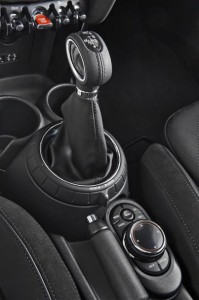
Turbocharging end-runs this problem by boosting the little three’s output at low RPMs, so there’s plenty of power right now – without having to wait for the engine to rev up much.
If your foot is light on the pedal, the engine’s smaller displacement (and reduced pumping losses due to the nonexistence of a fourth piston going up and down all the time) also means it burns less fuel: 29 city/41 highway vs. 29 city, 37 highway for the previous Mini with the 1.6 liter four.
But when your foot gets heavy, the turbocharger spins up and compresses the incoming air. The more air (and fuel) you can stuff into the cylinders, the more powerful the ensuing explosion – and the faster the car will go.
But the turbo only does its thing when called on by your right foot. Back off the accelerator and the boost wicks down; you enjoy the fuel economy advantages of a smaller engine.
The one hair in the soup is that the turbo three is designed to burn premium fuel.
You can fill up with regular, but the result will probably be reduced power (and mileage) because while the Mini’s engine can adjust itself to burn lower-octane fuel it’s not optimized to burn lower-octane fuel. You won’t hurt your Mini by feeding it regular, but you won’t get the best mileage (or performance) out of it.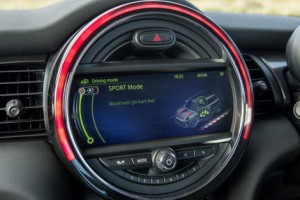
To get it, you’ll have to spend the extra for premium – which puts a bit of a dent in the Mini’s otherwise admirable fuel economy stats.
Most economy-minded cars (which the Mini kinda-sorta is) are designed to do their best on regular unleaded, for obvious reasons. It’s not unexpected that the Mini S – the high-performance version of the Mini – is set up for premium.
But it is surprising that the regular Mini is designed for it, too.
The Mini’s turbo three doesn’t feel – or sound – turbocharged. No whistle, no sudden surge when the boost comes online. In the past, turbos were bolted on to do exactly that, but here the mission is to mask the engine downsizing from a four to a three. To maintain not just the power/performance of a larger (and not-turbocharged) engine but to mimic its steady power delivery.
If you didn’t read the specifications (and if the engine didn’t require premium) you’d never guess that you were driving a turbocharged car, much less a three cylinder-powered car.
Previously, the manual-equipped Mini was the only way to go. Because the automatic-equipped Mini was seriously gimpy. Now, you can go either way without sacrificing performance or economy.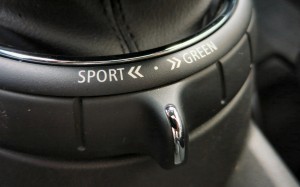
The available (formerly standard) three-mode driver-selectable programs are engaged via a typically Mini spiffy rotating plastic ring at the base of the shifter stalk. Thumb it to the right for Green/economy (“let’s minimize!”) or to the left for mid-range (“let’s motor!”).
Most snarky of all – “let’s motor hard!” (that’s one more nudge to the left).
As is typical of such programs, the sportier the mode you select, the faster (and firmer) the shifts (automatic models) the more responsive the engine feels. In economy mode, though, there is an additional – and not-typical behavior: A “coast” mode that reduces engine RPM to idle until pressure on the accelerator is resumed. It’s like putting the transmission in neutral at 60 or 70, except it happens automatically and without the dangers associated with coasting, such as a runaway car or having to remember to put the transmission back into gear.
As you engage each mode, the Mini’s LED cabin mood lighting changes color – green for economy, orange-red for normal and cherry red for sport.
This slightly bigger, slightly longer-wheelbased and slightly heavier-than-before Mini feels more substantial, less darty. Wind gusts affect it noticeably less than earlier (and smaller and lighter) Minis.
The ride is still on the firm side, but this can be modulated softer – or firmer – by selecting from the three available wheel/tire combos. The base trim comes with 15s, which deliver the softest ride. Or, go with the optional low profile (short/stiff sidewall) 18s, which provide sharper steering response and more grip in the corners, but also butch up the ride quality.
An adjustable/multi-mode suspension is also available. 
Though it’s some five inches longer overall, the Mini is still mini (including its turning circle, which is just 35.5 feet, only slightly more than before) and can be Froggered through traffic with ease. The upticked power enhances the little car’s natural advantages, including its excellent forward visibility, a function of the upright and fairly tall windshield glass.
Visibility to the side, however, isn’t great – because of eight-inch thick B pillars that just happen to line up with the anti-whiplash headrests. You will find that it’s often necessary to lean forward – or back – to try to see around the massive buttress . . . and see whether anyone’s about to T-bone you as you pull out from a side street.
That aside, the Mini is a blast to drive, especially in heavy urban/suburban traffic. It’s also exceptionally easy to drive – in particular, to park. This is a car that fits almost anywhere – or at least, in spots most other cars won’t.
One nit, though: Mini has downsized the fuel capacity to 11.6 gallons from 13.2 previously. This makes the Mini seem thirstier than it is. A smarter move would have been to increase the tank’s capacity to maybe15 gallons. The Mini would have seemed super thrifty that way.
It just happened that the week I had the Mini, we had guests. My sister, her significant other and my nine-year-old niece. All of which – plus me, plus the baggage that accompanied them on their long-haul flight from San Diego to The Woods (rural SW Virginia) – had to fit inside the Mini for the trip home from the airport.
A 40 minute drive.
No cheating by roping stuff (such as my nine-year-old niece) to the Mini’s roof.
The Mini took all four of us, plus three backpacks and a 32x21x12 suitcase (I measured) that could have carried my niece inside.
It actually fit in the Mini. Behind the second row – which was not folded flat. Or even forward. This was an Our Lady of Lourdes miracle. At least, Jesus on the piece of burned toast. Neither my sister nor my niece had to assume the fetal position in order to sit in the second row with 6 foot 3 me in the driver’ s seat and nearly six-foot niece’s dad sitting next to me in the front passenger seat.
It was tight – but doable.
Front legroom in the Mini has always been good – especially for such a tiny-on-the-outside car. It still is: 41.4 inches, comparable to what you’d find in many mid-sized cars. But now there’s viable backseat legroom – 30.8 inches (several inches more than in the new Mercedes CLA sedan) and about three inches more shoulder room and about 20 percent more cargo room: 8.7 cubic feet vs. 5.7 previously. Fold the second row and you’ve got 38 cubes – about twice as much “trunk” space as many full-size cars.
The Mini has superior headroom – which may be a function of it being designed by Germans. Headroom in Japanese-designed cars is often tight, especially if the car is ordered with a sunroof. In the Mini, there’s 40.3 inches of headroom for the driver and front seat passenger, so even with the optional sunroof, a very tall man (me) still has several inches of air gap between the crown of his head and the headliner.
Another German Thing is seat heaters that get hot. As opposed to warm.
Thoughtful design touches include a pair of adjustable side-window sun glare blockers (in addition to the usual two you get for the windshield) and retro-themed toggle switches for various functions. The car also makes its own unique (and happy) noises such as the old-timey tick-tock turn signal indicator and the pinball machine-like cheerful bumpa-bumpa-bumpa themes for the park sensors.
THE REST
The Mini is mass produced but can be custom-configured to such an extent that your Mini may be the only one exactly like it. Two-tone Jelly Belly paint treatments, various stripe/decal packages – plus a bevy of a la carte (and packaged) optional equipment.
You can minimalize – and keep the price around the entry-level $20k price point. Or you can load the car up with luxury and technology equipment (including a heads-up display, 10 speaker premium audio rig and a fan-cooled dock for your cell phone).
All Minis come with a “boot to bonnet” free scheduled maintenance deal for the first three years or 36,000 miles. Some car companies’ free maintenance deals are borderline fraudulent in that most new cars don’t need much maintenance (beyond really basic stuff, such as oil and filter changes) for the first three years or 36,000 miles and the stuff these plans “cover” is either stuff that probably won’t need to be done or which (like an oil change) wouldn’t cost you much anyhow.
But Mini’s deal includes stuff that probably will need to be dealt with before three years or 36,000 miles elapse – including wiper blade replacement and brake pads and brake fluid.
THE BOTTOM LINE
As cute (and fun) as ever – but more plausibly practical.
If you value independent media, please support independent media. We depend on you to keep the wheels turning!
Our donate button is here.
If you prefer to avoid PayPal, our mailing address is:
EPautos
721 Hummingbird Lane SE
Copper Hill, VA 24079
PS: EPautos stickers are free to those who sign up for a $5 monthly recurring donation to support EPautos, or for a one-time donation of $10 or more. (Please be sure to tell us you want a sticker – and also, provide an address for us to mail the thing to!)


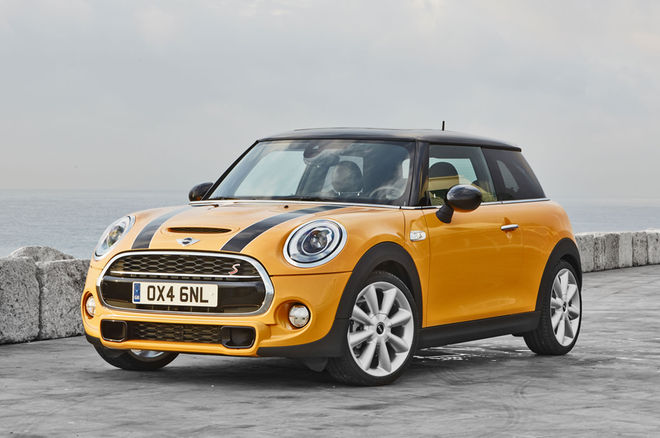



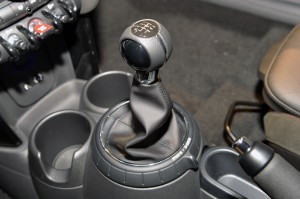
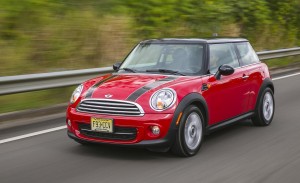

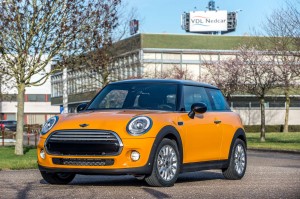






“means it burns less fuel: 29 city/41 highway vs. 29 city, 37 highway for the previous Mini with the 1.6 liter four.”
But, since you’ll be paying a 15% to 20% premium for premium for the turbo, versus regular for the old four, your fuel costs will be a bit higher. But, sounds like the performance boost would be worth the slight uptick in gas costs. The bigger question is, does the turbo cost significantly more upfront?
Hi Jim,
They’ve kept the prices about the same (not counting the loss of the formerly standard adjustable drive modes, which now costs $500 extra).
This is a very fun little car – even if it’s a little bigger now than it used to be! 🙂
Yuck.
(((Extraneous babble here, because it won’t allow me to just post “yuck”.))))
I can understand why someone might buy the S or Cooper Works models, for wacky, hyper, special kinda sporty, urban driving experience.
Buy when economy, and value for price enter the picture (not to mention reliability ;-)) who in the world would choose a 3 banger Mini?
Hi Mike,
This is the trend; Ford also sells one in the Fiesta and the Mitsu Mirage as a three also. They are going to become much more common as CAFE upticks, methinks.